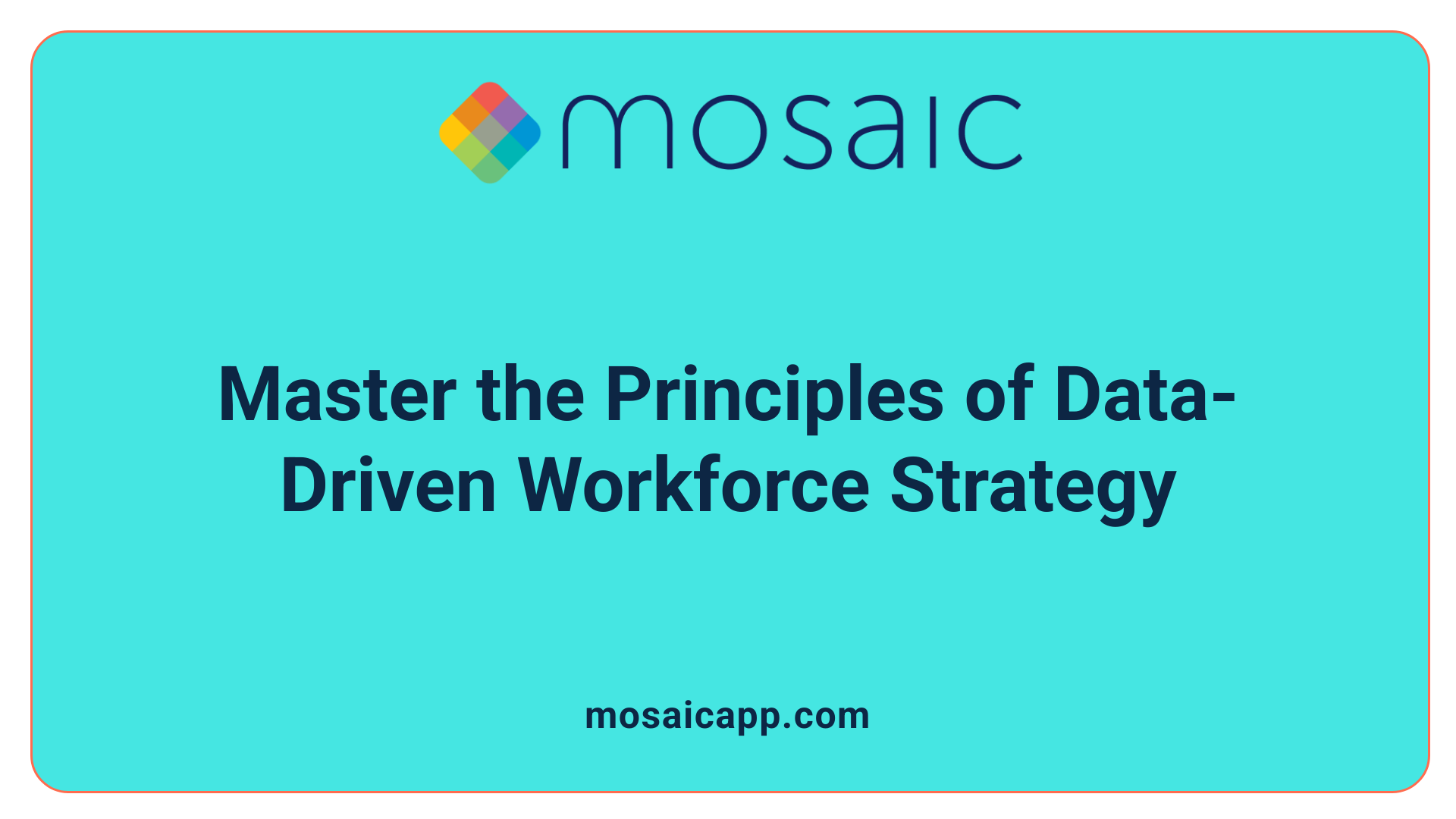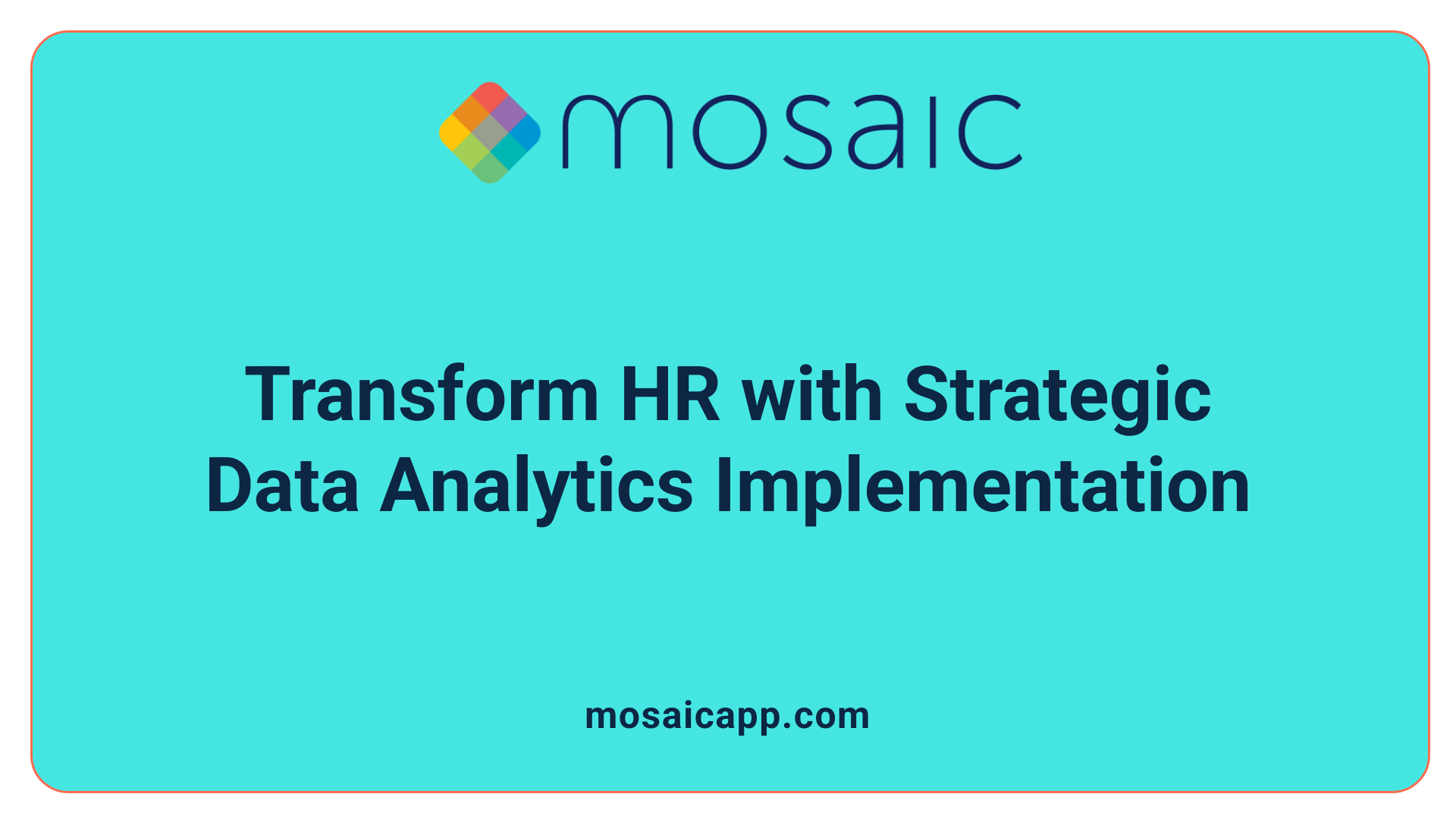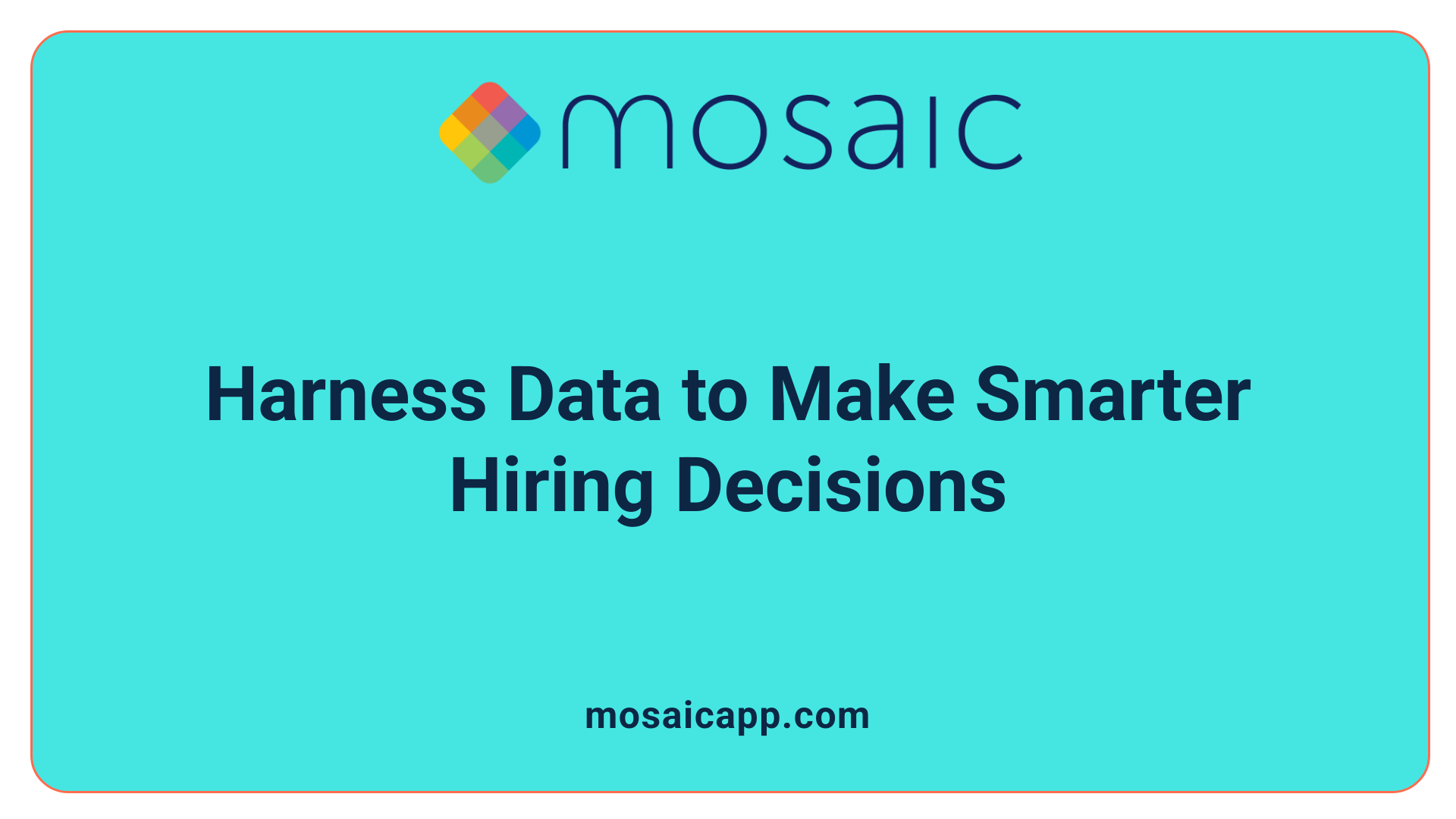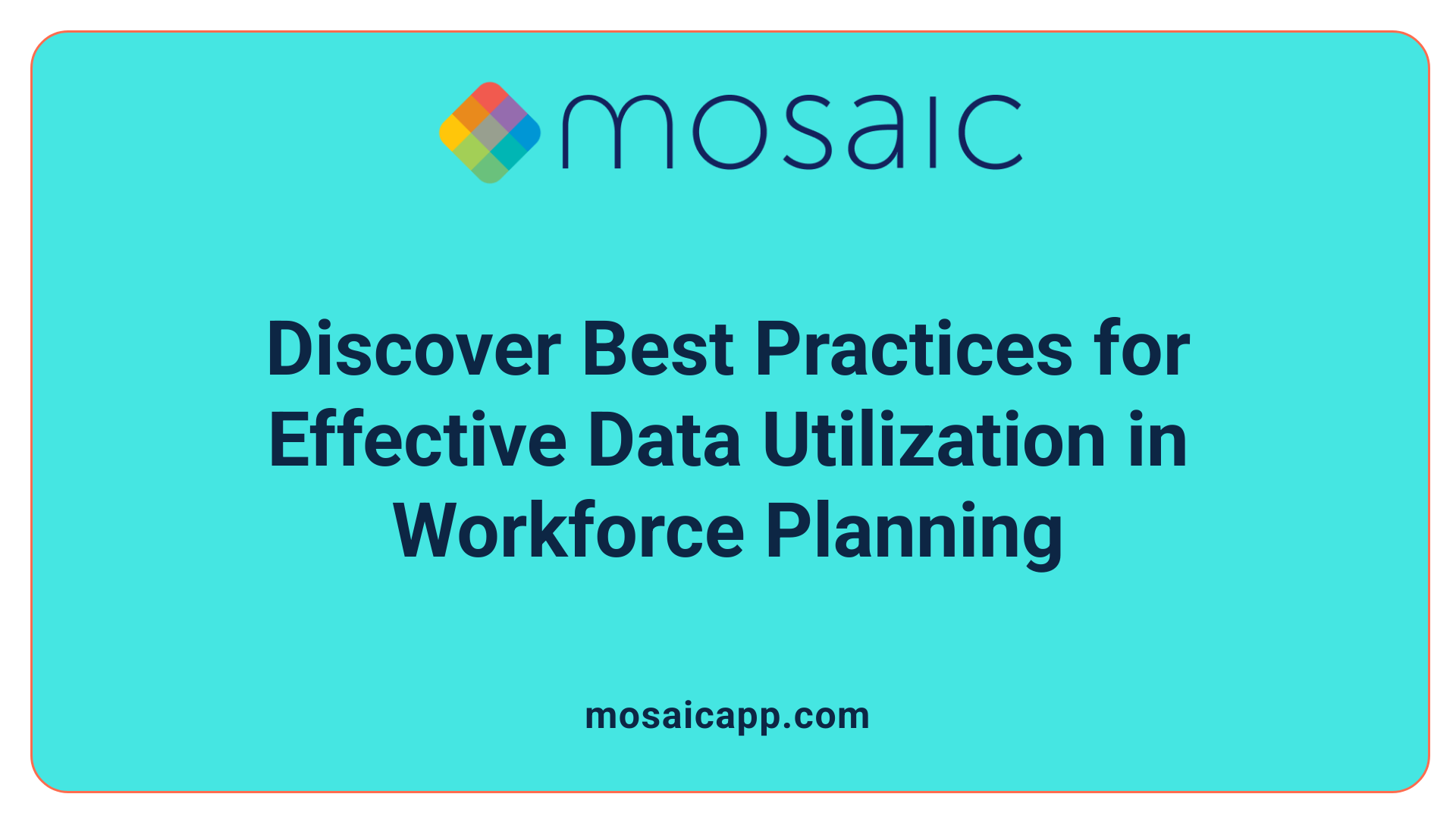Navigating the Future of Recruitment with Data-Driven Insights
In an increasingly competitive and complex talent market, organizations are turning to data-driven workforce planning to craft smarter, more responsive hiring strategies. This approach leverages advanced analytics, technology, and benchmarking to align staffing needs with organizational goals accurately. By understanding how pipelines influence hiring plans, utilizing key metrics for workforce analysis, and fostering a data-centric culture, businesses can dramatically improve the quality, speed, and fairness of their recruitment processes.
Fundamentals of Data-Driven Workforce Planning

What are the principles and benefits of data-driven workforce planning?
Data-driven workforce planning relies on real-time analytics and insights to help organizations make smarter staffing decisions. Its guiding principles include flexibility, strategic alignment, collaboration, and continuous improvement. These principles ensure that HR strategies adapt to changing business needs and market conditions.
Utilizing advanced tools such as AI, predictive analytics, and automated dashboards allows HR teams to identify skills gaps, forecast future staffing needs, and optimize how resources are allocated across departments. This proactive approach minimizes guesswork and reduces reliance on intuition.
The benefits are substantial. Accurate forecasts enable companies to anticipate hiring requirements and avoid shortages or surpluses. Personalizing employee experiences based on data boosts retention, while swift responses to technological shifts keep organizations competitive.
Moreover, data-driven planning improves overall efficiency. It helps in discovering potential skill gaps early, enabling targeted training and succession planning. This strategic foresight supports long-term growth and resilience.
In summary, adopting data-driven workforce planning fosters agility, precision, and forward-looking strategies, helping organizations stay aligned with their business objectives and market demands. It turns reactive HR functions into strategic partners that drive organizational success.
| Aspect | Description | Additional Details |
|---|---|---|
| Principles | Flexibility, strategic alignment, collaboration, continuous evaluation | Guides decision-making processes |
| Core Tools | AI, predictive analytics, dashboards, automation | Supports insights and forecasting |
| Main Benefits | Accurate staffing forecasts, improved retention, quick adaptation | Enhances overall workforce strategy |
| Practical Outcomes | Skills gap identification, targeted training, succession planning | Drives organizational growth |
| Long-term Goals | Resilience, agility, market competitiveness | Ensures sustainable development |
Strategic Implementation of Data Analytics in HR

What strategies can be used to implement data-driven workforce planning?
Implementing effective data-driven workforce planning requires a clear set of strategies that ensure the process aligns with organizational goals. First, organizations should establish robust data collection processes. This involves integrating internal workforce data, such as employee performance, turnover rates, and skills inventory, with external benchmarks like industry standards and market trends. Ensuring data accuracy and relevance is crucial for making informed decisions.
Leveraging advanced analytics tools and dedicated people analytics platforms enables real-time insights into key workforce metrics. These include skills gaps, succession planning needs, and retention risks. Utilizing these tools helps HR teams to forecast future staffing needs and develop proactive strategies.
Scenario modeling and predictive analytics are essential components. They allow organizations to simulate various future scenarios—such as technological changes or economic shifts—and adjust their workforce strategies accordingly. This foresight supports agile talent management, reducing risks associated with uncertainty.
Embedding strategic workforce planning (SWP) into routine business processes ensures continuous alignment between HR initiatives and organizational objectives. Regular review cycles, supported by dashboards and performance reports, keep strategies current and responsive.
Finally, nurturing a culture of data literacy is vital. Training HR staff and managers on data interpretation enhances decision-making capabilities. Ongoing monitoring of key metrics, like time-to-fill, cost-per-hire, and employee retention rates, provides tangible indicators of success and areas for improvement.
By combining these strategies—data integration, technology utilization, scenario planning, process embedding, and skills development—organizations can develop a resilient and responsive workforce planning framework that adapts to changing business needs.
The Role of Talent Pipelines in Hiring Plans
How can pipelines influence the development of hiring plans?
Talent pipelines are essential components of strategic recruitment, significantly shaping how organizations plan for future staffing needs. By establishing a steady stream of pre-qualified candidates, companies can move away from reactive hiring methods and adopt a more proactive approach.
Effective talent pipelines allow organizations to anticipate staffing requirements well in advance. This proactive sourcing means businesses can better align their hiring efforts with long-term goals, reducing the urgency and costs associated with last-minute recruiting. By continuously engaging with potential candidates through networking, social media, and talent communities, companies build relationships that facilitate quicker onboarding when vacancies arise.
Using data analytics to monitor pipeline health and engagement levels helps refine talent sourcing strategies. For example, analyzing the success rates of different sourcing channels or assessment tools enables organizations to focus on the most effective methods.
Developing internal pipelines by nurturing existing employees through development programs and internal mobility creates a resilient workforce ready to fill future roles. External pipelines, on the other hand, diversify talent pools and support diversity goals.
Building and maintaining these pipelines support diversity, inclusion, and strategic talent management by broadening access to high-quality candidates. This approach not only accelerates hiring workflows but also enhances the quality of hires.
Overall, talent pipelines serve as a strategic asset that integrates data-driven insights with long-term workforce planning. They help organizations stay agile, reduce time-to-hire, and ensure a steady supply of talent aligned with evolving business needs.
Key Metrics for Workforce Analysis and Planning

What metrics and benchmarks are useful for effective workforce analysis?
Effective workforce analysis depends on a variety of metrics and benchmarks that help organizations understand current workforce performance and identify areas for improvement.
Some of the most important metrics include:
- Turnover rates: Measures the rate at which employees leave the organization, indicating employee stability and potential retention issues.
- Absenteeism: Tracks employee absence patterns, which can signal engagement or health concerns.
- Time-to-hire: The number of days it takes to fill a vacancy, reflecting recruiting efficiency.
- Cost-per-hire: The total expenses incurred to hire a new employee, including advertising, interview, and onboarding costs.
- Employee engagement scores: Indicates overall employee satisfaction and motivation.
- Skills gap indices: Reveal areas where the current workforce lacks necessary skills for future roles.
Benchmarking these metrics against industry standards provides valuable context. For example:
| Metric | Industry Benchmark | Description |
|---|---|---|
| Average time-to-fill | 36-44 days | Time taken to successfully fill a position. |
| Voluntary turnover | Around 13.5% | Percentage of employees leaving voluntarily annually. |
| Cost per hire | ~$4,700 | Average expense to hire one new employee. |
| Internal mobility rate | Varies by industry, typically 10-15% | Rate of employees moving internally to new roles. |
| Time-to-productivity | 1-3 months for new hires | Duration until new employees reach full performance. |
By regularly evaluating these metrics and comparing them to industry benchmarks, organizations can spot inefficiencies, gauge talent pipeline health, and plan more effectively.
Integrating these data points with strategic goals helps optimize workforce planning, enhances operational efficiency, and promotes sustainable talent development. Monitoring progress through dashboards and reports encourages continuous improvement and helps align hiring and retention strategies with organizational objectives.
Utilizing Data to Enhance Hiring Outcomes

How can data improve future hiring decisions?
Using data in recruitment transforms how organizations select and hire talent. By analyzing patterns and outcomes from past hiring, companies can identify what predicts success in specific roles. This insight helps tailor recruitment strategies to source candidates more effectively.
Advanced analytics, like predictive and prescriptive diagnostics, enable HR teams to forecast candidate performance and identify high-potential talent. For example, data from applicant tracking systems (ATS), psychometric assessments, and behavioral feedback can reveal which candidate profiles lead to longer retention or better job performance.
Collecting and scrutinizing a range of metrics supports ongoing process refinement. These include time-to-hire, cost-per-hire, and retention rates, which serve as benchmarks for improving hiring efficiency. For instance, a reduction in time-to-hire can be achieved by analyzing the bottlenecks revealed through data, resulting in a quicker onboarding process.
Moreover, data helps in reducing unconscious bias by providing objective insights into candidate qualifications rather than solely relying on subjective judgments. It allows organizations to establish fairer, more accurate evaluation methods that align with their strategic goals.
Incorporating candidate feedback and performance data creates a continuous feedback loop. This enables recruiters to fine-tune sourcing channels, assessment tools, and interview techniques, making the hiring process more efficient and predictive.
Overall, data-driven decision making empowers HR teams to select the right candidates faster, saving costs and supporting long-term organizational growth. This approach not only enhances the quality of hires but also ensures a more diverse and inclusive workforce.
| Metric | Purpose | Benefits |
|---|---|---|
| Time-to-Hire | Measures how long it takes to fill a position | Identifies delays, accelerates hiring |
| Cost-per-Hire | Tracks expenses involved in hiring | Helps optimize recruitment budgets |
| Quality of Hire | Assesses new hire performance and integration | Ensures better staff retention and productivity |
| Source Effectiveness | Evaluates sourcing channels' quality and efficiency | Improves sourcing strategies, reduces waste |
| Candidate Experience Score | Measures applicant satisfaction | Enhances employer branding and candidate engagement |
By continuously analyzing these metrics, organizations can adapt their strategies to become more competitive and responsive in attracting top talent.
Fostering a Data-Driven Recruitment Culture
How can organizations develop a data-driven recruitment culture?
Creating a culture that relies on data for hiring decisions involves several strategic steps. Starting with training and development, organizations should ensure their HR and recruitment teams possess strong skills in data literacy and analytics. This includes understanding how to interpret data, communicate insights effectively, and tell compelling stories based on data findings.
Implementing integrated, centralized systems like Applicant Tracking Systems (ATS) and analytics platforms is essential. These tools eliminate data silos, allowing all departments involved in recruitment to access and analyze data seamlessly. Centralized systems facilitate a comprehensive view of the hiring process, making it easier to evaluate sourcing channels, candidate quality, and recruitment efficiency.
Setting clear, measurable goals aligned with relevant metrics is crucial. Key indicators such as time-to-fill, quality-of-hire, cost-per-hire, and diversity targets should guide recruitment efforts. Regularly reviewing these metrics helps identify bottlenecks and areas for improvement, fostering a continuous learning environment.
Transparency is another vital element. Sharing data insights openly across teams and celebrating successes encourages a mindset of data-driven decision making. Embedding analytics into daily workflows and decision points ensures that data becomes a natural part of the recruitment process.
Building this culture involves ongoing education, consistent monitoring, and the willingness to adapt strategies based on insights. When organizations prioritize data literacy, invest in proper technology, and promote transparency, they create an environment where data powers better hiring decisions and improves overall recruitment outcomes.
Best Practices in Data Leveraging for Workforce Planning

What are best practices for leveraging data in workforce planning and recruitment?
To make the most of data in workforce planning and recruitment, organizations should develop a structured approach that combines technology, skilled teams, and high-quality data. Building a dedicated analytics team composed of members with expertise in data analysis, management, and interpretation is vital. This team, often supported by advanced IT tools such as Applicant Tracking Systems (ATS), psychometric assessments, and predictive analytics software, can translate raw data into meaningful insights.
Collecting comprehensive internal data forms the foundation of effective data-driven planning. Organizations should gather information on employee demographics, skills, turnover rates, recruitment costs, and candidate experience metrics. Equally important is integrating external labor market data to understand talent availability, industry trends, and competitor strategies. This holistic view helps HR teams forecast future staffing needs, identify retention risks, and evaluate sourcing channels.
Developing predictive models using historical data allows companies to anticipate workforce demands, optimize recruitment timelines, and improve retention strategies. Regularly monitoring performance metrics—such as time-to-hire, quality-of-hire, cost-per-hire, and offer acceptance rates—and benchmarking against industry standards keeps strategies aligned with organizational goals.
Maintaining high data quality and ensuring privacy compliance are essential. Clear KPIs guide decision-making and provide measurable targets for success. Moreover, organizations should foster a culture of continuous improvement, regularly reviewing analytics strategies and adapting to changes in the business environment. This proactive approach enhances agility, reduces bias, and enriches the candidate experience, ultimately leading to more effective and efficient workforce planning.
Strategic HR and Workforce Planning Through Data Analysis
What strategic approaches to HR and workforce planning utilize data analysis?
Organizations are increasingly turning to data analysis to shape their human resources and workforce strategies. This data-driven approach involves integrating analytics directly into HR decision-making processes, which helps forecast future staffing needs and uncover potential skill gaps before they become critical issues.
A central element of these strategies is the use of predictive analytics, allowing HR teams to simulate various scenarios such as industry shifts or technological advances, including the rise of generative AI. These models enable organizations to be proactive rather than reactive, making informed decisions about talent development, workforce reskilling, and resource allocation.
Linking operational, financial, and HR data provides a comprehensive view of workforce health and allows decision-makers to prioritize initiatives that enhance agility. For instance, Bayer exemplifies how integrating predictive analytics and leadership involvement in planning can improve retention and organizational resilience.
Embedding workforce planning into overall business strategies promotes ongoing monitoring of relevant metrics such as turnover, hiring costs, and employee productivity. This continuous oversight facilitates strategic adjustments aligned with organizational goals, ensuring the workforce remains resilient and capable of adapting to change.
By fostering a culture that values data literacy and leveraging technology tools—such as automation workbooks, scenario analysis templates, and benchmarks—companies position themselves to capture meaningful insights. This approach not only supports effective planning but also ensures that HR strategies are aligned with broader business objectives.
| Strategy Element | Description | Example |
|---|---|---|
| Integration of HR and data | Merging HR data with operational and financial information for strategic insights | Bayer’s implementation of predictive analytics |
| Scenario planning | Estimating multiple future outcomes based on varying assumptions | Industry shifts, AI impact |
| Leadership involvement | Ensuring executives participate in and own the planning process | Bayer’s leadership ownership |
| Culture and literacy | Promoting understanding and use of data across HR teams | Training and continuous improvement |
| Use of tools and benchmarks | Deploying automation and external data to inform decisions | Workforce analysis workbooks, revenue per employee |
By adopting these methods, organizations can build resilient workforce plans that anticipate future needs, adapt proactively to change, and ultimately strengthen their competitive position in today’s fast-evolving landscape.
Shaping the Future of Talent Acquisition and Management
The integration of advanced data analytics and strategic workforce planning techniques marks a transformative shift in HR and recruitment practices. Organizations that leverage pipelines, measure critical metrics, and embed a data-driven mindset position themselves to anticipate future needs, reduce costs, and foster inclusive, high-performing workplaces. As the landscape of work evolves with innovative technologies like AI and predictive modeling, the firms that continuously refine their data strategies and foster a culture of analytics will lead the way in talent management, securing long-term success and competitive edge.
References
- Data Driven Hiring: An Effective 2025/26 Recruitment ...
- Data-Driven Hiring: Improve Your Recruitment Process
- How to Build a Data-Driven Recruiting Culture
- Data-Driven Workforce Planning
- People Planning in 2025: How to Build a Data-Driven ...
- Build a Data-Driven Workforce Plan: A Critical CIO Exercise
- The 5 Steps of Analytics-Driven Workforce Planning
- Strategic workforce planning in the age of gen AI
- Benefits of Data-Driven Workforce Planning


